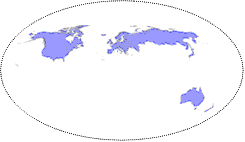This week, the third working group of the Intergovernmental Panel on Climate Change (IPCC) is meeting in Bangkok to finalize its report on measures to curb global carbon emissions. According to numerous press accounts (see for example, the AFP report in the Hindustani Times: India, China, Brazil Hold Up Climate Change Talks), China, India and Brazil have slowed the proceedings by demanding that the North accept its dominant role in climate change. Their purpose is to force more concessions from the North in the next round of global negotiations, and to avoid restrictions on their own emissions. In one sense they're right: The onus is clearly on the developed North, particularly the U.S., to make the lion's share of cuts in global carbon emissions. It will be very surprising if India and China forsake coal as a low-cost energy source as long as the U.S. brazenly exploits it. But in another critical sense, the leaders of the South are wrong. There is a disturbing, even delusory, quality to the view that solving this problem is entirely up to the North. As my colleague David Roodman has so aptly noted, if the boat is sinking it's suicidal to deadlock over who should bail. To see why the South should join in, consider the following parable.This is a story about civilizations on two planets, Northworld and Southworld. They exist in parallel universes and have identical atmospheres and oceans, but they also have a few differences. One is geophysical: Southworld's land mass is concentrated in its southern hemisphere, while the opposite is true for Northworld. Here are pictures of the two worlds:
 Northworld |  Southworld |
Cumulative CO2 Emissions | Atmospheric CO2 Concentration |
 It shows that Southworld in 2007 is tracking 40 years behind, with cumulative carbon emissions identical to Northworld's in 1967. Since the two plantary atmospheres are identical, Southworld's atmospheric concentration of CO2 is also identical to Northworld's in 1967. Looking ahead to 2025 (1985 in Northworld), the scientists see the onslaught of the same crisis in their own world: a rapidly-rising atmospheric CO2 concentration and the triggering of a dangerous greenhouse effect. Sobered by their excursion into the parallel universe, Southworld's scientists sound the alarm and begin a campaign to rid their planet of fossilized carbon dependency before it's too late.And so should the South's scientists in this world, for the parable of Northworld and Southworld reveals a stark truth that is often overlooked in the present climate change debate: Even if the developed North had never existed, the developing South would be on the threshold of a planetary climate crisis in 2007. By 2025, if a solitary South continued burning fossilized carbon, it would face the same climate crisis that the world is facing now. To put it another way, even if the North were so heroic as to eliminate all of its CO2 emissions by 2025, the South would still face the catastrophic consequences of global warming.So the lesson of the parable, which is based on actual historical data and recent projections for our South/Northworld, is clear and inescapable: The South should act now to reduce carbon emissions. And the North should assist urgently, not as an act of charity but from stark necessity. This boat is going to sink unless we all start bailing.
It shows that Southworld in 2007 is tracking 40 years behind, with cumulative carbon emissions identical to Northworld's in 1967. Since the two plantary atmospheres are identical, Southworld's atmospheric concentration of CO2 is also identical to Northworld's in 1967. Looking ahead to 2025 (1985 in Northworld), the scientists see the onslaught of the same crisis in their own world: a rapidly-rising atmospheric CO2 concentration and the triggering of a dangerous greenhouse effect. Sobered by their excursion into the parallel universe, Southworld's scientists sound the alarm and begin a campaign to rid their planet of fossilized carbon dependency before it's too late.And so should the South's scientists in this world, for the parable of Northworld and Southworld reveals a stark truth that is often overlooked in the present climate change debate: Even if the developed North had never existed, the developing South would be on the threshold of a planetary climate crisis in 2007. By 2025, if a solitary South continued burning fossilized carbon, it would face the same climate crisis that the world is facing now. To put it another way, even if the North were so heroic as to eliminate all of its CO2 emissions by 2025, the South would still face the catastrophic consequences of global warming.So the lesson of the parable, which is based on actual historical data and recent projections for our South/Northworld, is clear and inescapable: The South should act now to reduce carbon emissions. And the North should assist urgently, not as an act of charity but from stark necessity. This boat is going to sink unless we all start bailing. Disclaimer
CGD blog posts reflect the views of the authors, drawing on prior research and experience in their areas of expertise. CGD is a nonpartisan, independent organization and does not take institutional positions.







